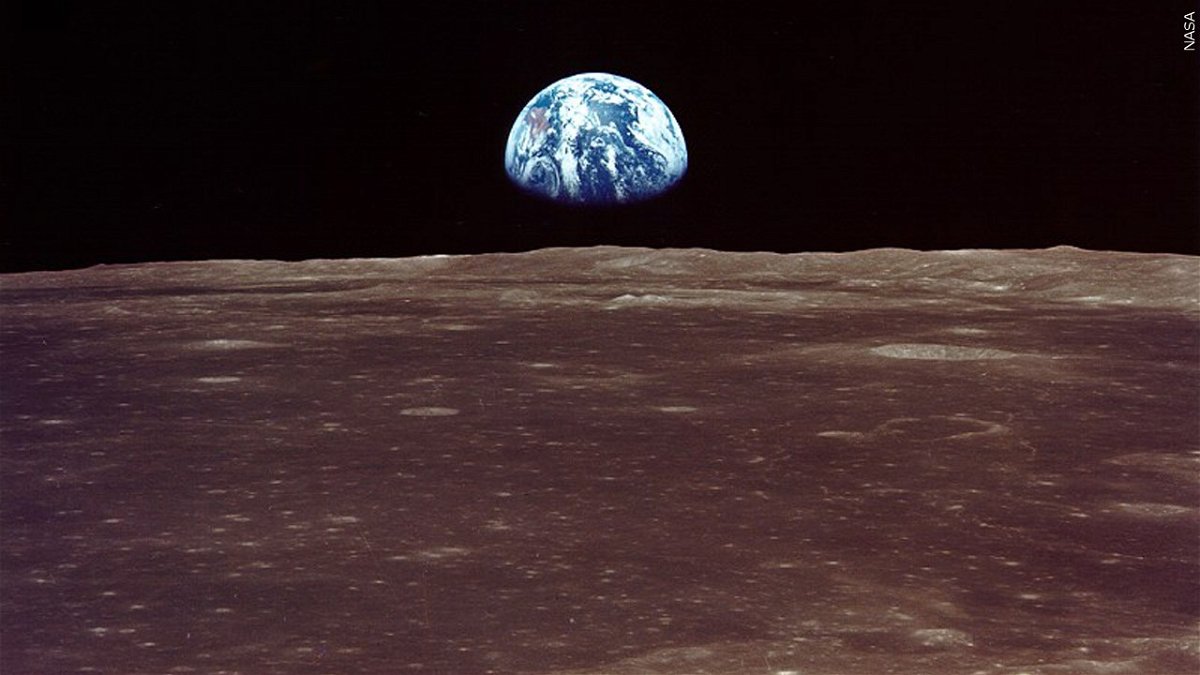Artemis I prepares to launch on a historic lunar journey

By Ashley Strickland, CNN
(CNN) - In 1968, NASA astronaut Bill Anders captured a photo while aboard Apollo 8 that changed the way we see our planet: Earthrise.
The iconic photo shows a perspective of Earth as seen from near the lunar surface.
It might be easy to take dreamy sunrises or glowing full moons for granted because there are opportunities to see them all the time. But there's something about seeing our world as it truly is -- a planet against the inky backdrop of space -- that still inspires awe.
Soon, we may have that chance again. The Artemis I mission is preparing to launch on a journey to the moon, and its uncrewed Orion spacecraft will carry an array of cameras inside and outside of the capsule.
And as it orbits the moon, Orion may have the opportunity to show us another breathtaking Earthrise.
Defying gravity
It's time to go back to the moon.
NASA's Artemis I mission is expected to lift off on August 29 between 8:33 a.m. and 10:33 a.m. ET -- and we have everything you need to know about how to watch this historic launch and follow the mission's timeline.
All eyes are on the Space Launch System rocket and Orion spacecraft as they sit on the launchpad at NASA's Kennedy Space Center in Florida, waiting to venture farther than any spacecraft intended to carry humans. Orion is expected to fly 40,000 miles (64,373 kilometers) beyond the moon, surpassing the record set by Apollo 13.
We asked a Cape Canaveral forecaster all about how weather conditions may factor into the launch. And if you can't make it down to the cape yourself, check out these awesome launch watch parties happening online and in real life across the country.
Want to get a little more hyped? Take a special look at the Artemis I mission by the numbers to learn why it's such a monumental feat.
Explorations
Artemis I may not have a human crew, but its commander's seat won't be empty.
A mannequin, named Commander Moonikin Campos for a key Apollo 13 figure, will test a survival suit for future astronauts to wear on trips to the moon. Campos is accompanied by Helga and Zogar, twin "phantom" mannequin torsos that will test how other protective gear stands up to deep space radiation.
The mission will also carry 10 shoebox-size satellites, called CubeSats, that will peel away from the rocket and set off toward their own destinations, including the first deep space biology experiment and what could become the smallest spacecraft to land on the moon.
All of the science experiments associated with Artemis I will gather data on how to make deep space travel safer and more efficient for humans in the future.
Fantastic creatures
Dogs really are our best friends.
Our beloved pets may be so overjoyed to see us after being apart that their eyes well with tears of happiness, according to a new study.
Dogs, much like humans, have tear ducts to keep their eyes clean and healthy. Now, scientists think there may be an emotional link to dog tears as well.
And just like people, dogs can develop dementia. The risk increases after age 10, but don't despair if you're seeing the signs of canine cognitive decline.
Keeping Barkley's mind engaged with food puzzles and other toys, as well as keeping him active with regular exercise, can help your pooch stay healthy.
We are family
Humans have been walking upright for a long time -- 7 million years, according to a new study on one of the earliest known human ancestors.
Researchers analyzed the bones of Sahelanthropus tchadensis and determined that they walked on two feet -- but they could also climb trees like a pro.
Walking upright is what set humans on a different evolutionary path from chimpanzees.
Despite the fact that walking on two feet was likely a disadvantage to survival, scientists believe there's a good reason our earliest ancestors stood up. And it has to do with the impacts of a changing climate millions of years ago.
Across the universe
The James Webb Space Telescope is living up to its hype.
NASA shared new images of Jupiter taken by the space observatory this week -- and even scientists didn't expect them to be this good.
Jupiter's rainbow auroras and massive storms are showcased in new details, while faint rings and distant galaxies photobomb in the background.
Separately, the telescope also captured the first clear evidence of carbon dioxide in the atmosphere of an exoplanet. The gas giant WASP-39b orbits a sunlike star 700 light-years from Earth.
Curiosities
Dig into these for some intrigue:
-- The spotted lanternfly may be a strikingly beautiful bug, but this invasive species can literally suck the life out of crucial crops. So if you spot one, experts ask that you squash it.
-- Dramatic lightning and sparkling ice features are among the 22 images picked for the Weather Photographer of the Year 2022 competition.
-- Drought can be rough on your plants. New research shows that you might need to pour them a martini.
The-CNN-Wire
™ & © 2022 Cable News Network, Inc., a Warner Bros. Discovery Company. All rights reserved.